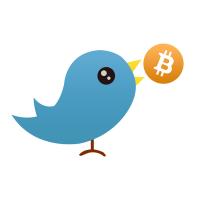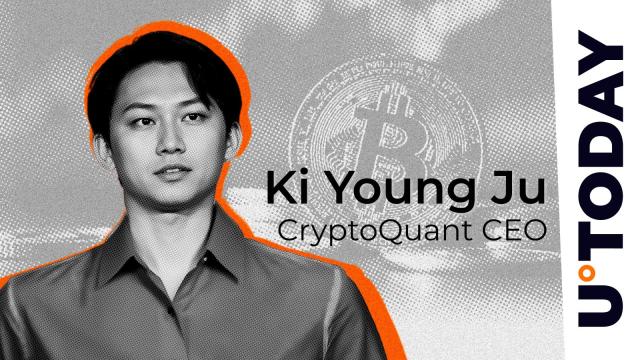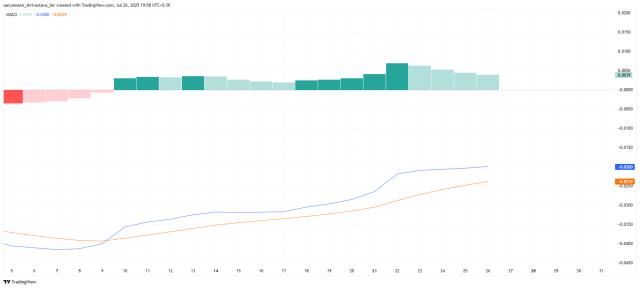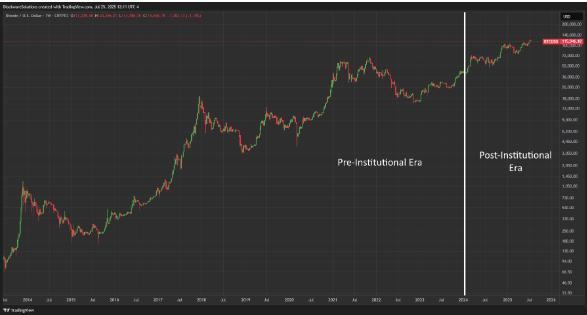Author: Zhu Weisha , Wang Yuxiao
Stablecoin is a hot word, referring to a cryptocurrency that is backed by secure financial assets and anchored to fiat currency. It is the most realistic application of cryptocurrency and has opened up the process of financial reform. As a key tool connecting traditional finance and the crypto ecosystem, the introduction of the US Genius Act and Hong Kong Stablecoin Ordinance marks the beginning of the global financial system's supervision of this emerging field.
Although the United States and Hong Kong have different purposes for launching stablecoin bills, they are both formulated based on the practice of cryptocurrency stablecoins, and both hope to expand them to the current legal currency system in a way that is beneficial to them. Comparing the similarities and differences between the two bills will help us understand the trend of future financial development. This is a great event in human progress, marking a major step forward in the financial revolution initiated by the new generation of cryptocurrency elites represented by Satoshi Nakamoto. This article will not go into the content of the bill, nor will it talk about its advantages. There are already many related articles, and we will mainly discuss the problems here.
Neither bill contains final relief measures
Rescue measures are necessary for the stability of the financial system. The most famous one is the financial tsunami in the United States from 2008 to 2009. The joint rescue of the US government and the Federal Reserve restored financial stability. For the US "Genius Act", because the reserve assets are strictly limited to short-term US Treasury bonds, US dollars and other highly liquid, low-risk US dollar-denominated assets, US rescue measures are necessary; the reserve asset category of Hong Kong's issuance of stablecoins allows the use of combined assets (including non-Hong Kong dollar assets) as reserves, so government rescue does not seem to be that necessary for Hong Kong.
In fact, stablecoins have been rescued by the Federal Reserve. When Silicon Valley Bank went bankrupt in March 2023, the second largest stablecoin USDC fell by more than 10%. Later, the Federal Reserve rescued Silicon Valley Bank, and the $3.3 billion USD stored in Silicon Valley Bank was saved, and USDC was restored to $1. However, in the US "Genius Act", only the regulatory unit: the Office of the Comptroller of the Currency was seen, but there was no unit that could provide assistance - the Federal Reserve or similar institutions.
When there is no licensing system for stablecoins, stability, security and exchangeability are guaranteed by unreasonable "plugging". In the same incident mentioned above, a large number of investors such as Justin Sun exchanged and redeemed a large amount of USDC, and a large number of redemptions caused the price of USDC to fall. At that time, cryptocurrency and stock traders Robinhood, exchanges Binance, Coinbase, etc. all announced the suspension of some USDC services, that is, redemption was prohibited. In addition, USDT, the largest stablecoin in 2021, digested $700 million in redemption requests within 48 hours, and only processed $2 billion in redemption requests within 40 days, accounting for 22% of its reserve assets. In traditional finance, it is impossible to handle it this way.
Once a law is made, it must be followed. From the perspective of the bill, the issuance of stablecoins is managed according to traditional finance. The reserve assets of the United States are very clear, which are "US dollar cash, insured deposits of the Federal Deposit Insurance Corporation (FDIC), US Treasury bonds with a maturity date of less than or equal to 93 days, overnight repurchases supported by the Federal Reserve Bank of New York, and central bank reserves." In this way, the Fed's rescue is very reasonable. The reserve assets required by Hong Kong cover a wider range, which is an asset portfolio. In theory, the more types there are, the higher the uncertainty. USDC deposits US dollars in multiple banks, which increases the uncertainty brought by banks. It will suffer if the banks explode. Most of USDT buys US bonds and avoids the bankruptcy of some US banks. The definition of Hong Kong's portfolio assets is broad, and the risk of reserve assets is higher than that of the United States, and the difficulty of rescue is also high. However, since most of the stablecoins issued are not Hong Kong dollar stablecoins, rescue is not the responsibility of the Hong Kong Special Administrative Region Government. The Hong Kong government is very smart in handling this.
From the perspective of the United States, does the government need to back up the dollar stablecoin? It only maintains the stability of the dollar. The stability of the stablecoin is the responsibility of each issuer, and each issuer bears the responsibility if there is a problem. It is reasonable if it is not a single ecosystem, just like each cryptocurrency ecosystem does not affect each other. If it is an ecosystem, the chassis has problems, such as the cryptocurrency Luna as the base of the ecosystem has problems, and all the projects in the ecosystem are dead. In other words, the mortgage project on Luna has problems, dragging down the entire Luna ecosystem. All issued dollar stablecoins belong to the dollar ecosystem. From the practice of cryptocurrency, it is necessary to back up. Finance uses the entire society as a test field. There are no examples before it happens. Once it happens, the cost is very high. Cryptocurrency is also finance. The field of cryptocurrency constitutes the "test field" of traditional finance. The lessons learned here are invaluable. All examples may reappear in the new stablecoin environment.
A thousand-mile dam collapses because of an ant hole. The algorithmic stablecoin UST (Luna) team caused a $100 million selling arbitrage due to a move to reduce mortgage interest, which caused a chain reaction and caused the collapse of the stablecoin UST (Luna). Although he himself joined forces with institutions in the circle for rescue, it is said that it also cost billions of dollars, but the market value almost returned to zero in just a few days. A plate of more than 30 billion US dollars eventually leveraged the market value loss of 700 billion US dollars in cryptocurrency. The adjustment time of cryptocurrency is faster than that of the traditional financial system. Fortunately, it did not spread to the fiat currency system because the two systems are isolated. It was Powell who prevented the fiat currency chain reaction caused by the collapse of UST (Luna). When the two systems are connected, we face unknown new situations, and we don’t know how much chaos will be caused.
Finance is a game of chess, which is maintained by credit. People's trust can turn into fear in an instant. Cryptocurrency is a global market with no barriers. If the financial crisis in 2009 had occurred in the cryptocurrency field, there might not have been time for rescue.
Finance is a game of chess. The cryptocurrency FTX exchange went bankrupt due to the market panic caused by Luna, which caused the asset price to fall. If it had survived until today, the market value of FTX assets would have recovered. Luna's failure lies in the lack of overall rescue measures. If the Federal Reserve had rescued it, it would not have died, and there would not have been a loss of $700 billion in cryptocurrency. Of course, this matter has nothing to do with the Federal Reserve, and it would not have taken action, but the fire eventually burned it.
Finance is a game of chess. The Hong Kong dollar belongs to the US dollar ecosystem. When Hong Kong becomes a cryptocurrency financial center, a fast financial system, and because the loss of money has nothing to do with the Hong Kong government, the Hong Kong government does not need to cover the bottom. Once the opportunity is missed, the problem may be out of control. The US bill only allows institutions with banking licenses to issue stablecoins, and Hong Kong is not limited to banking licenses. There is a possibility that a large American technology company will issue stablecoins in Hong Kong. When a company can issue stablecoins, with the current management method, the legal currency as a reserve asset is opaque and the possibility of counterfeiting is very high. The current Hong Kong "Stablecoin Ordinance" may become a feast for speculators and is very likely to become the starting point of the financial tsunami.
The trading time difference between stablecoins and fiat assets
Stablecoins are traded 24/7, and so are foreign exchange. However, the reserve assets of stablecoins are not. This problem is not very prominent in the United States. However, for Hong Kong, the reserve assets of multiple combinations will have trading time differences, resulting in trading time differences between the primary market and the secondary market.
The Hong Kong government stabilizes the Hong Kong dollar by buying and selling at a specified price in the secondary market; stablecoins are used by arbitrageurs to stabilize prices through arbitrage between the secondary and primary markets. When the secondary market price falls below $1, arbitrageurs can make a profit by buying stablecoins in the secondary market and exchanging them for $1 with the stablecoin issuer in the primary market at a 1:1 ratio. This arbitrage process also means that when the stablecoin issuer sells reserve assets to meet the cash redemption of arbitrageurs, the selling pressure of secondary market investors will eventually trigger the sale of reserve assets. For large players such as the Hong Kong Monetary Authority, due to their credit, the delay in the settlement of reserve assets can be provided by the exchange in the secondary foreign exchange market to provide legal currency for advance payment and exchange, while small stablecoins, even if they have reserve assets, do not have enough credit. Once there is no rescue or the rescue timing is not coordinated, a run will occur. This is particularly evident in the field of cryptocurrency, because all assets on the chain can be checked and attacks can be made if loopholes are found.
Regulators and market participants want stablecoins to have both low run risk and price stability, but these two goals are contradictory and driven by different forces. In particular, according to regulations, stablecoins allow unlimited redemption, which will increase arbitrage efficiency and improve price stability under normal circumstances, but once panic occurs, it will generate higher run risks.
The time difference between stablecoins and fiat currency systems will create risks if there are no proper countermeasures.
Once panic occurs, it will be excessive. This is the butterfly effect in the Amazon rainforest.
The US practice of issuing USD stablecoins is not in line with the practice of issuing HKD
Hong Kong requires a capital of 25 million Hong Kong dollars or equivalent assets to obtain a license before issuing specific stablecoins, which means that offshore RMB or US dollar stablecoins can be issued in Hong Kong. Unlike the US bill, Hong Kong allows a variety of qualified entities to issue stablecoins, which is in line with Hong Kong's status as a financial center.
In fact, what Hong Kong least needs to issue is the Hong Kong dollar stablecoin.
The Hong Kong dollar is essentially a stablecoin of the US dollar, but it is not encrypted. The issuance level of the Hong Kong dollar has always been the ceiling for the issuance of sovereign stablecoins. The Hong Kong dollar is issued by three major banks: HSBC, Standard Chartered and Bank of China. The Hong Kong dollar is running well, and the Hong Kong team is the only team in the world with more than 40 years of experience in stablecoin management. Why can't any bank in Hong Kong issue banknotes? Why don't they apply existing experience? The meaning here is very deep, and it takes a lot of words to discuss it, which is not the scope of this article.
Here are just the conclusions:
The experience of Hong Kong in issuing Hong Kong dollars shows that the practice of the United States in issuing dollar stablecoins is not in line with the practice of issuing Hong Kong dollars. Can the experience of stablecoins, which has only been successfully tested in a small range of cryptocurrencies, be applied to a more complex financial environment with almost no changes?
Hong Kong has formulated rules for the issuance of stablecoins. The issuance conditions are loose, and the violation conditions are very detailed. It is a strict supervision, and all kinds of stablecoins can be issued. The United States pursues dollar hegemony, and Hong Kong pursues financial center. This is the fundamental difference between the two bills.
The two have different purposes, so it is difficult to say that the United States should adopt the Hong Kong dollar model to issue stablecoins. However, who can clearly explain the risks of US stablecoins?
Reminds us of Soros
Are stablecoins less risky? Currency is a unit of account and the basis of all financial activities. A single move can affect the entire body. Soros's attack on the Hong Kong dollar was a joint action of the stock market, futures market and foreign exchange market. If Hong Kong did not have the support of the Chinese government and the struggle of Hong Kong officials, Soros would have succeeded.
History records this difficult moment:
"Tsang Yam-kuen is a tough guy who doesn't want to give up the linked exchange rate and live in humiliation."
"After a difficult decision, Donald Tsang made a decision that will go down in history: rather than letting the wealth of Hong Kong people fall into the hands of speculators, it would be better for the government to enter the market, use foreign exchange reserves, and give it a try."
"Tsang and Yam then reported the idea to Tung Chee-hwa, then Hong Kong's chief executive. The two men were very nervous but they did not expect that Tung Chee-hwa would approve the idea in just half an hour."
"At this point, Donald Tsang is very clear that he is using the hard-earned money of the Hong Kong people to gamble. If he wins, it's fine. If he loses, let alone resigning, even dying to apologize would be the least they can do. But there is no other way for them to go."
"That night, Donald Tsang cried all night. Sometimes, history requires some people to make some difficult decisions. The final showdown between the two sides came as expected." (Quoted from Shen Hejun and Alchemy Professor)
This was the biggest challenge the Hong Kong dollar had ever faced. If Hong Kong had failed at that time, it would have regressed more than 10 years. The financial literacy of Hong Kong people at that time was extremely high. August 28, 1998 was the decisive day. The great Hong Kong people were united in their efforts to cooperate with the Hong Kong government in the stock and foreign exchange markets to pull up the market, and the banking industry raised short-term borrowing rates. Until the close at 4:00 p.m., the Hang Seng Index finally settled at 7,829 points! The total trading volume for the day reached the highest record in the history of the Hong Kong stock market - HK$79 billion! The Hang Seng Index futures finally settled at 7,851 points. In a total of 10 trading days, the Hong Kong government used foreign exchange reserves equivalent to HK$120 billion to pull up the Hang Seng Index by 1,169 points. Hong Kong finally won.
Salute to the heroes who defend Hong Kong.

Compared to when Soros was hunting the Hong Kong dollar, there is now one more currency market, which is the linkage of the stock market, futures market, foreign exchange market and stable currency. What will be the result? I think the smartest financial speculators in the world are already thinking about it. Especially since they control a lot of financial power. Moreover, stable currency is a new thing, and loopholes in the system are waiting to be discovered.
We have seen the Trump team trying to use stablecoins to strengthen the dollar and solve the U.S. debt problem. This is a great and ambitious idea. However, it is based on the experience of stablecoins that have been successfully tested in a small range of cryptocurrencies, and this experience does not include the final rescue measures; Moreover, the Federal Reserve and the government have no affiliation; people who create obstacles are everywhere; it is really not easy to think about it. Once the loopholes in the system are exploited, if a financial tsunami is caused, the government will inevitably have to spend a huge price to make up for it.
The problem of fixed exchange rates and leverage for stablecoins
I analyzed the Hong Kong dollar in the article " Using Hong Kong dollars to achieve Bitcoin standard ". According to the situation at that time, the economic fundamentals of Hong Kong represented by the Hong Kong dollar were stronger than those of the United States. The duel with Soros does not depend on fundamentals, but on short-term funding. Whoever has more money will win.
It is difficult to maintain a fixed exchange rate. Historical experience has determined that the Hong Kong government never mentions the Hong Kong dollar stablecoin. What impact will the issuance of the Hong Kong dollar stablecoin have on the Hong Kong dollar? In fact, the issuance of the Hong Kong dollar stablecoin is to leverage the Hong Kong dollar. If the Hong Kong dollar is kept from de-anchoring and the 24-hour exchange is solved, the risk is not great at first glance.
If the market recreates a Soros-style attack, leverage will amplify the force of the attack. What will the attack look like under the new circumstances?
We don't know how big this leverage is. The amount of financial assets is greater than the amount of currency. There are clauses in the US bill that prohibit the re-collateralization of stablecoins. In fact, there is no need for collateralization. When the issuer issues stablecoins, it will obtain legal currency, which will then be used to buy short-term US bonds, and then become reserve assets to issue stablecoins. One dollar can buy two dollars of treasury bonds, which is very helpful for digesting bonds. If you think about it again, can you form three, four, or more purchases?
For the issuer of stablecoins, the stored value assets are interest-bearing, but the stablecoin buyers do not have to pay interest, which implies a very profitable business model. In the United States, it is not a big problem for banks to issue stablecoins, but according to the Hong Kong Stablecoin Ordinance, the issuers of stablecoins are diverse, and non-bank institutions are not subject to the compliance restrictions of bank management rules, which undoubtedly amplifies the risks of the entire financial system.
The following statements are purely hypothetical.
It is legal to exchange legal currency for stable currency. Stable currency has no interest. It is also legal to use legal currency to buy government bonds and earn interest. There is interest for the issuer. Since it is not a mortgage, it is not impossible for the issuer to circulate and magnify. According to Hong Kong's method, if it includes bond-type reserve assets, it can basically achieve multiple leverage. If it is all cash reserve assets, it can be more. When a company obtains a license to issue stable currency, if it circulates and issues stable currency to earn interest, should it be regulated? How to regulate?
The amount of currency issued by commercial banks should be included in M2 (broad money). The leverage amplification brought by stablecoins should be included in the US in theory, but how should it be included? This raises new issues for US monetary management. Hong Kong should not be included if it is not a stablecoin of Hong Kong dollar.
The legal tenders of Malaysia and Thailand, which use fixed exchange rates, did not withstand Soros's attack. For countries that want to issue stablecoins, they are leveraging their own legal tenders, which amplifies the risks on the capital side. The issuance of sovereign currencies should be based on economic fundamentals, so does the issuance of stablecoins amplify financial bubbles?
There are many more unclear and new problems like this.
Of course, every advantage has its disadvantages, and we need to discover through practice that progress is better than stagnation.
The issuance of sovereign stablecoins, the Hong Kong Monetary Authority is an example
How should stablecoins be issued? The current method is that each company issues one. How many currencies in the world can each person remember? Remembering 30 is good enough. If thousands of households issue stablecoins, will people remember them? There is a big flaw in the design here.
The Hong Kong dollar issued by Hong Kong is the US dollar stablecoin. It uses the same name: HKD. It has been running for decades without any problems, which shows the rationality of its issuance. There are three note-issuing banks in Hong Kong: HSBC, Standard Chartered and Bank of China. They do not issue HSBC coins, Standard Chartered coins and Bank of China coins respectively. The currencies issued are all called Hong Kong dollars. The HKMA is responsible for maintaining the stability of the Hong Kong dollar, rather than each bank maintaining the stability of its own currency. The Hong Kong banking industry jointly maintains the stability of the Hong Kong dollar, which is much less risky than each bank maintaining its own. This is the correct issuance method of sovereign linked exchange rate stablecoins that has been tested by history. Of course, the United States is an exception, because the US dollar is currently the base currency.
The outstanding designer of Hong Kong's linked exchange rate is Sir John Henry Bremridge.

The HKMA guarantees the stability of the Hong Kong dollar, which is a form of rescue. Does every stablecoin issuer have the ability to guarantee the stablecoin it issues?
The current method of issuing stablecoins has three clear risks: no backup plan, opacity of legal currency assets, and inconsistent names of issued stablecoins.
The bottom-line measures are not a technical issue, but the last two problems can be solved by technology.
These two bills are new wine in old bottles
Since the fiat currency backing stablecoins is not transparent, the United States and Hong Kong naturally thought of regulating stablecoins in the same way as they regulate banks. The lack of transparency in reserve assets still causes market concerns because they must be guaranteed by audits or certification. For example, the Bank for International Settlements (BIS) has expressed concerns about the real reserves of assets behind stablecoins, especially for projects such as Tether (USDT) that have a high market share but opaque information.
Does the Bitcoin system need to be managed by people? No! Because it is a transparent ledger. Satoshi Nakamoto quoted David's words "The ledger needs to be public" in the white paper and used David's article as the first citation of the white paper. In fact, this is the core concept of Satoshi Nakamoto's white paper. The generalization of decentralization and blockchain is one level lower than this concept.
Ledger transparency reconstructs the responsibility mechanism of financial intermediaries such as banks. The responsibility of traditional financial intermediaries mainly relies on trust and compliance statements, while the Bitcoin system transforms "intermediary responsibility" into "verifiable behavioral responsibility" and "procedural structural responsibility" through transparent ledgers. This transformation is not only a technological upgrade, but also a deep reshaping of the logic of the financial intermediary system. Satoshi Nakamoto used a combination of unalterable ledgers + computing power + timestamps to connect the ledgers through trusted blocks to build a system that does not require trusting anyone but can also establish trust.
This trust system uses an open, transparent and verifiable way to form a root of credit out of thin air; the transfer of credit is driven by program logic, which cleverly realizes the credibility of the process. This idea is much more advanced than the computer's need to use a secure computing area (TEE) to generate a root of credit. The computer's secure area is inaccessible to ordinary people and is open to core programmers. We cannot verify and must trust them. Just like we have to believe that banks will not do evil. Of course, there is also legal deterrence. The roots of credit generated in traditional computer theory and social practice are incomplete because there are problems of unverifiable and delayed verification. Satoshi Nakamoto solved this problem very cleverly.
Neither bill meets the above characteristics. Neither bill takes advantage of the advanced ideas of cryptocurrency and there is much room for improvement.
We need a low-cost regulatory system
The Hong Kong Stablecoin Ordinance is very detailed, with a requirement to disclose assets daily. It requires 110% reserves, which is well written. But how to judge the authenticity of the materials? The reserve certificate based on Merkle Tree published by Binance, the leader of cryptocurrency exchanges, should be said to be meaningful. However, the market does not accept it and raises many questions because it does not conform to the idea of cryptocurrency, that is, the way Binance's credit root is generated is not credible enough. Similarly, today's bill does not conform to the idea of cryptocurrency. It is not as credible as Binance, and does not solve the credibility of the credit root at all.
The essence of Satoshi Nakamoto's idea is to use the transparency of the ledger to embed the regulatory responsibility mechanism into the ledger structure. It is no longer a post-audit or statement, but exists in the data in real time, integrating the management and processing processes. If we still need post-audit, it does not match the development of the times.
An excellent regulation should be low-cost. If it cannot match the size of the Web3 team, then we should reflect on what we did wrong. Bitcoin has only 4 maintainers, the Ethereum Foundation has about 30 people, and USDT (Tether) has only more than 100 people.
If the fiat currency reserve assets corresponding to stablecoins can be made transparent, the regulatory responsibility mechanism of financial intermediaries will be reconstructed, and supervision based on account book transparency will be carried out, and the regulatory cost will be greatly reduced. The Bank for International Settlements (BIS) will also be relieved of its concerns about the true reserve status of the assets behind stablecoins.
Issuing transparent stablecoins is the upgrade of traditional finance
The design of the "Unified Ledger" promoted by the Bank for International Settlements (BIS) is too complex and faces many challenges in terms of compatibility with multiple technology architectures, cross-institutional collaboration, and multi-regional regulatory adaptation. In other words, the use of pure blockchain and alliance chain is not enough to build a "visible + controllable + verifiable + upgradeable" ledger transparent intermediary platform. The blockchain ledger is a good template, but it is still missing for traditional finance, and the ledger needs to be re-innovated based on Satoshi Nakamoto's ideas.
We need to solve the problem of opaque fiat currency assets and make both stablecoins and the assets behind them transparent. The better solution to match the purpose of stablecoin issuance today is to pass on Satoshi Nakamoto's transparent ideas through technological innovation and issue transparent stablecoins.
Going a step further, the use of transparent stablecoins can actually realize the logic of the Hong Kong Monetary Authority to issue Hong Kong dollars, that is, all banks issue stablecoins under the same name. Not only large banks, but any small bank can issue transparent stablecoins with the same name. Taking the issuance of stablecoins by banks as an opportunity, the business of banks can be gradually made transparent, and the ideas and technologies of Web3 can be used to completely transform the traditional financial industry and avoid the collapse of the banking industry.
Satoshi Nakamoto's idea is not only applicable to transparent stablecoins. By expanding Satoshi Nakamoto's transparent idea, we will usher in transparent stablecoins, transparent banks, transparent contracts, transparent exchanges, and transparent enterprises. This is an optional direction for the future development of the financial industry and enterprises.
As mentioned above, there are three major risks in the issuance of stablecoins. In addition to rescue measures, the use of transparent stablecoins can solve the remaining two problems: the opacity of legal currency assets and the inconsistent names of issued stablecoins. The technical potential demonstrated by Satoshi Nakamoto's ideas and the practice of the Bitcoin system can promote the technological upgrade of the traditional financial industry.
By the way, the KYC and AML of banks are mature. It is not easy for general companies to pass the KYC and AML. The main body of the US bill to issue stablecoins is banks, which will be better.
The future path must first take the step of Bitcoin national strategic reserve
The release of the bill follows the trend of history and grasps the root of the problem. The problem is identified accurately, but the method needs to be iterated.
This is a chaotic world. The old order is in chaos, and the new order has not been established. The bill is for the establishment of a new order. It may cause new chaos while bringing opportunities. I think Americans are mentally prepared for chaos. Only great politicians dare to take the risk of achieving great order from great chaos.
Risks cannot be avoided. The life cycle of the credit dollar has already passed halfway. For this, please refer to my article "Predicting when the dollar will collapse from the natural growth curve ". The root cause of all the chaos in the world now is the legal currency, as the saying goes, "the scale is not accurate". For this view, believers of legal currency sneer at it. You can't talk about ice with a summer insect. If there were no problems with legal currency, there would be no Bitcoin.
There is a view that stablecoins are more important than Bitcoin strategic reserves and have a higher priority. In fact, it is not. Bitcoin national strategic reserves should be prioritized. Because Bitcoin strategic reserves have no unknown risks, and operating funds are not a problem. Stablecoins have unknown risks and there is no way to prevent them.
The most important thing the United States should do now is to strategically reserve Bitcoin. In addition to purchasing Bitcoin itself, the United States can use its super influence to make people follow suit and lock a large amount of US dollars into Bitcoin. Just like China's real estate as a reservoir locks the RMB, bringing China 40 years of prosperity. Only by creating new asset demand can we promote prosperity.
The world economy needs new growth points for prosperity. If we believe that the Bitcoin standard will replace the US dollar standard, Bitcoin is a better growth point for the world economy than Chinese real estate, because Bitcoin has no price ceiling while real estate does. Bitcoin still has 4 and a half cycles of 18 years of rapid growth. Interested readers can refer to the forecast curve of the article " Bitcoin Natural Growth Curve" , which describes the price changes of Bitcoin in 30 cycles. The fourth cycle described in the article is that the turning point cycle has been achieved, and the fifth cycle is 200,000 US dollars, while the high point is 220,000-240,000 US dollars. Compared with artificial intelligence, the strategic reserve of Bitcoin is inclusive and is a new growth point to promote the overall prosperity of the economy.
What stablecoins do now is to promote the expansion of the scope of transactions. Transactions are very complicated, and eventually finance has become the boss of all industries from a service sector. We have also formulated the most financial legal systems for this purpose. Transactions serve the purpose of asset demand, not the other way around. These are two sides of the same coin, promoting each other. Economic growth must come first, and economic growth can cover up all the shortcomings. Ignoring the strategic reserve of Bitcoin is ignoring the biggest engine of economic growth.
Bitcoin strategic reserves are simple and should be kept simple. The United States can use Bitcoin strategic reserves to gradually complete the anchor change from the legal currency system to the Bitcoin system in 50 years. Even if there are some problems with stablecoins, the overall impression given by the Bitcoin national strategic reserves is that the US cryptocurrency strategy is not bad. Bitcoin strategic reserves have a time limit, the sooner the better, and the priority should be higher.
For more information about Bitcoin strategic reserves, please refer to my article " A Plan to Implement Bitcoin-Dollar Standard ". This plan is similar to the plan of US Congressman Loomis. In addition, the WuChain website also has a column " Bitcoin-Dollar Standard " with 16 articles. I will not repeat it here.
There are also related discussions on the relationship between Bitcoin strategic reserves and stablecoins on the website. I advocate a three-step approach to fiat currency anchoring: Bitcoin strategic reserves, Bitcoin dollar standard, Bitcoin standard. The United States is now in the second step, although it is different from the description, the purpose is the same. However, the United States skipped the first step.
If you don't know much about cryptocurrency, our chainless website will help you quickly understand why fiat currency is doomed to fail and why cryptocurrency is the future. History has its own laws and is not subject to people's will.
At present, the preparations for the stablecoin bill are still not sufficient, both in the United States and Hong Kong. The impact of stablecoins on the market is multifaceted, touching the foundation of finance and affecting the entire system. And because everything is related to stablecoins, there are unpredictable risks.
We know from the introduction of the imperfect bill that we need an independent cryptocurrency advisory committee that includes a wide range of people, including Satoshi Nakamoto. We can reduce the confusion by absorbing top wisdom. Why take risks when we can reduce the confusion?
Based on the achievements of cryptocurrency, using running accounts as the basis to form a trusted chain is the simplest way to issue transparent stablecoins. Before the launch of transparent stablecoins, there are huge regulatory loopholes. The financial tsunami is coming at any time, and the government needs to fill the loopholes as soon as possible with a prudent attitude.








